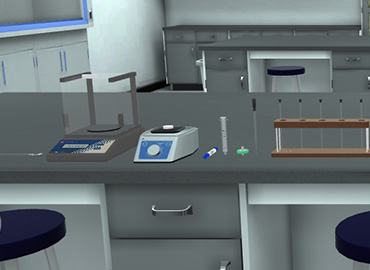





2.5M+
Active Users Worldwide
80%
Improved Learning Retention
60%
Reduction in Laboratory Costs
Analyzing pesticides in a water sample during NMR lab test.
*Different pesticides will be analyzed for their chemical structure using proton NMR in NMR simulator. *Each sample is dissolved in deuterated chloroform and purified before NMR analysis. Through Analysis: 1) The number of signals 2) The chemical shift 3) Multiplicity & Integration are obtained to predict the chemical structure of the analyzed compounds.
Become proficient at basic concepts of chemical characterization of chemical compounds.
Chemical Shift:
Solvent and Internal Standard:
Tetramethylsilane is used as an internal standard during the NMR measurements for the following reasons:
1. It is inert, non-toxic, and low boiling point, and can be recovered by distillation
2. A very small amount is required for measurement
3. It has 12 equivalent protons and thus gives a single strong peak
4. The signal appears outside (more upfield) away from most of the protons signals
1) The number of signals that gives the number of different sets of protons present in the sample measured.
2) The chemical shift that gives the environment of the protons.
3) Multiplicity that gives information on the number of protons on adjacent atoms, and integration of the peaks (peak area) that gives the number of protons in each environment using NMR simulator.




